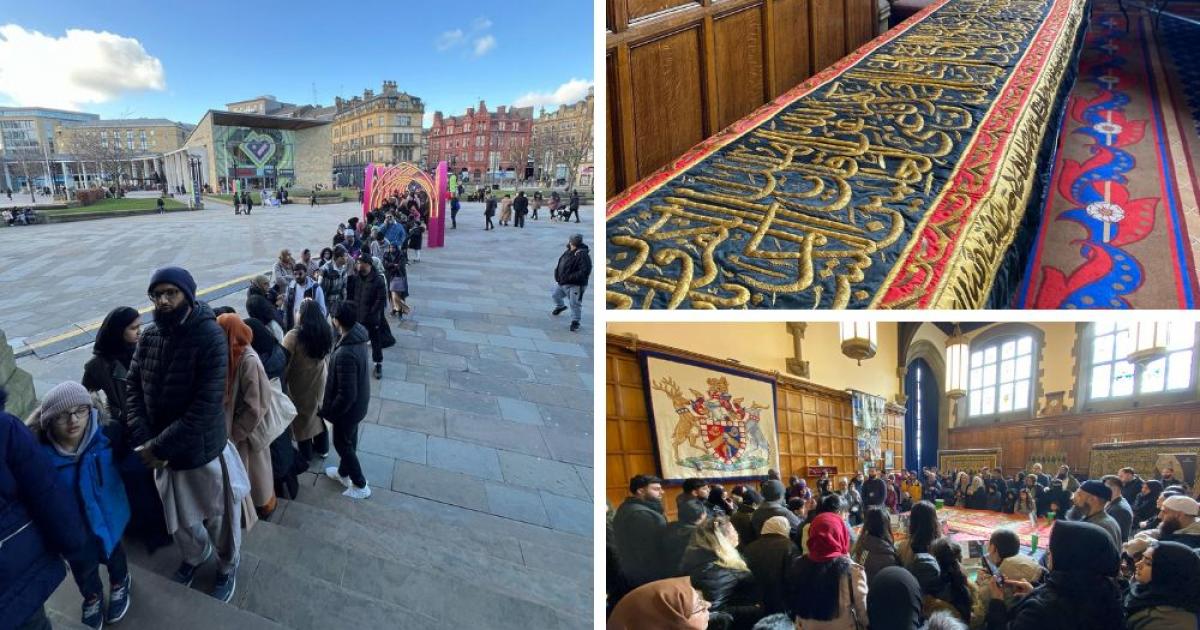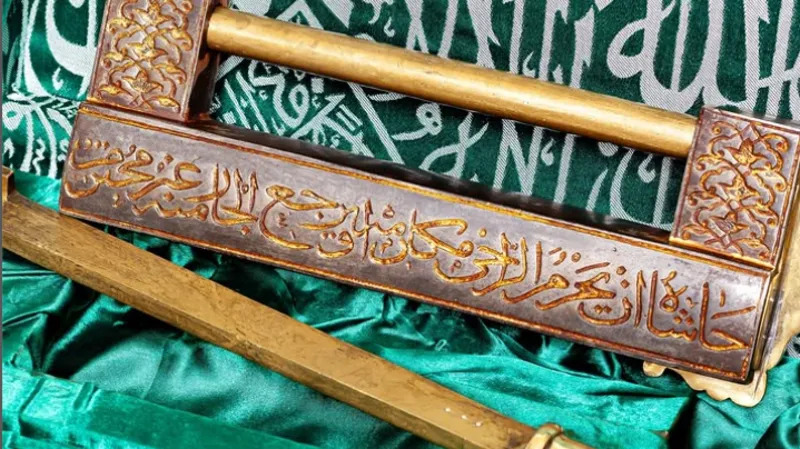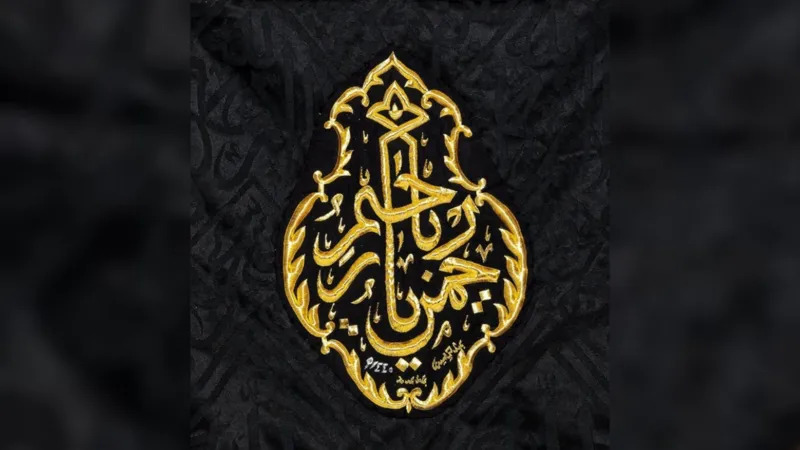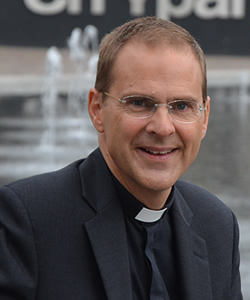Historic Exhibition of Sacred Islamic Artifacts Draws Over 7,000 Visitors to Bradford City Hall
As Islamophobia surges across the UK, events like this play crucial role in fostering interfaith dialogue and countering harmful stereotypes

Bradford City Hall hosted an exhibition of sacred Islamic artifacts, drawing over 7,000 visitors to witness the display. Organized by the Council for Mosques Bradford and District in collaboration with Bradford Council and sponsored by Mr T’s, the exhibition provided a once-in-a-lifetime opportunity for attendees to witness these treasured relics up close.
The exhibition featured artifacts from the Islamic holy cities of Makkah and Medina, among them the Kiswa—a 29-foot silk cloth embroidered with 22-carat gold and silver Quranic inscriptions that cover the Kaaba and are ceremoniously replaced every year during the Hajj pilgrimage.
 Lock and key from the Kaaba
Lock and key from the Kaaba
Other artifacts on display included the Medina door covers, the locks and keys of Maqam-e-Ibrahim, the Rawdah Chamber, Qandeel and Samadi pieces, and Ottoman-era relics over 270 years old.
For many Muslims, undertaking a pilgrimage to Makkah and Medina remains an unfulfilled dream due to financial constraints. This exhibition offered them an opportunity to connect with their faith intimately and profoundly.
Riyaz Maniar, the event’s organizer from Dewsbury, emphasized the rarity of this exhibition, saying, “These artifacts and relics are important to the Muslim world, and even in Mecca and Medina, you can’t get close up to these items.”

Many of the artifacts were from inside the Kaaba and the tomb of Prophet Muhammad (PBUH), making their public display an unprecedented moment for attendees.
“Some of the pieces are from inside the Kaaba, which is very rare. And some of the pieces are from inside the Prophet Muhammad’s tomb, which you don’t usually get to see unless you’re a member of the Saudi Arabian royal family,” Maniar added.
The response to the exhibition was extraordinary, with thousands of visitors queuing for hours to catch a glimpse of the sacred relics. Due to time constraints, many were unable to enter, prompting organizers to consider hosting a second exhibition to accommodate the overwhelming interest.
Community leaders and dignitaries, including Council Leader Cllr Susan Hinchliffe, Bradford East MP Imran Hussain, and Dr. Sofia Buncy MBE, DL, attended the exhibition, underscoring its significance.
 Among the guests was Bishop Toby Howarth, who expressed his admiration for the interfaith inclusivity of the event.
Among the guests was Bishop Toby Howarth, who expressed his admiration for the interfaith inclusivity of the event.
“One of the things I love about Bradford is the way that people of different faiths and no faith share with each other. It was a joy for me to see these treasures that are so precious to my Muslim friends and neighbors displayed here in our magnificent City Hall.”
Sarfraz Nazir, President of the Council for Mosques Bradford and District, described the exhibition as a landmark event for the city. “We are honored to have played a role in hosting this remarkable exhibition. It has been a privilege to welcome thousands of visitors from across the district, giving them the opportunity to experience sacred artifacts up close. We sincerely thank everyone who contributed to making this event possible and all those who attended.”
With Bradford designated as the UK City of Culture for 2025, this exhibition stands as a testament to the city’s commitment to cultural heritage and interfaith dialogue. It not only provided an educational and spiritual experience but also highlighted the city’s rich diversity and history of religious harmony.
Following previous exhibitions in Birmingham and Dewsbury, the display will now move to Batley Town Hall in April, continuing its UK tour.
As the UK grapples with a troubling rise in Islamophobia, events like this exhibition play a crucial role in fostering understanding and unity.
According to Tell Mama, an organization that tracks anti-Muslim hate crimes, nearly 6,000 incidents of Islamophobia were recorded last year, marking a sharp increase. Their report highlighted a surge in rhetoric that falsely portrays Muslims as terrorists or terrorist sympathizers, particularly following global conflicts.
A government spokesperson called these findings "extremely concerning" and reaffirmed the commitment to combating anti-Muslim hatred and racism.
"We are absolutely determined to bridge divisions between communities and are working closely with community groups, charities, and public sector partners to tackle hatred in all its forms."
The need for greater interfaith dialogue and cultural awareness has never been more pressing. Public exhibitions showcasing Islamic heritage offer a powerful counter-narrative to harmful stereotypes, helping to dispel misconceptions and build stronger community ties.
